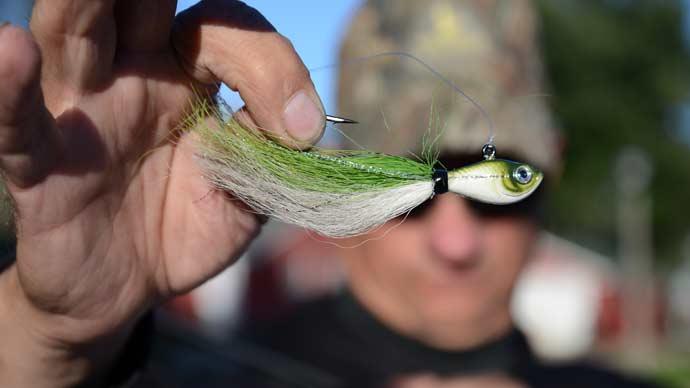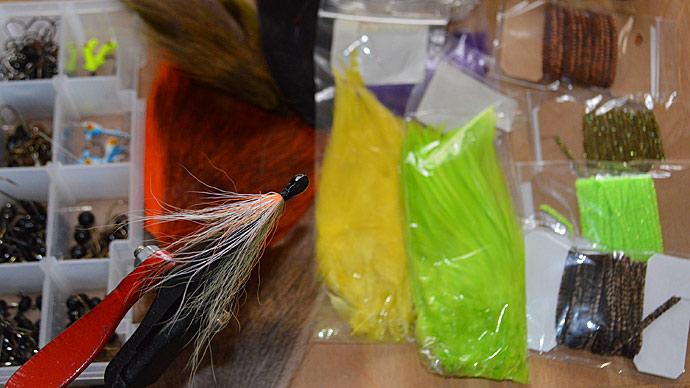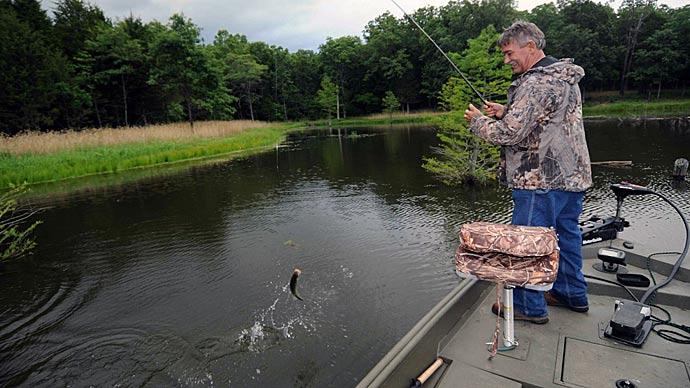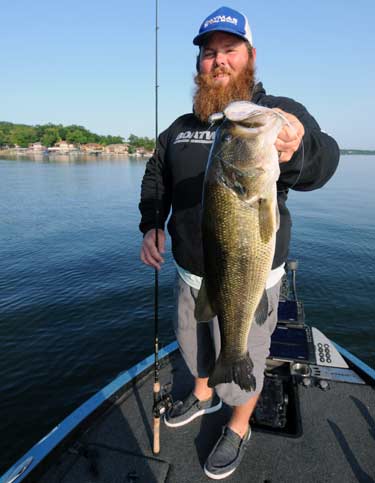
Southern anglers call it the "Preacher Jig," but tournament pro Lawson Hibdon refers to his homemade rendition of the lure as a big hair jig.
The "Preacher Jig" got its name from a Georgia Presbyterian minister, who tied his bucktail jigs and successfully refined the method of fishing the lure on West Point Lake and Lake Eufaula. “We have thrown some form or fashion of it forever, but it seems like the bait itself has gradually gotten bigger and bigger,” Hibdon says. The “we” he refers to are his grandpa, former Bassmaster Classic champion Guido Hibdon; his dad, former Bassmaster Classic and Forrest Wood Cup champion Dion Hibdon; and himself, the third generation of Hibdon touring pros.
“It seems like the bigger you want to make the jig, the bigger the fish you can catch on one,” Lawson says. "Many times when we pick it up, we only need one or two (big fish)." Hibdon considers it a big fish bait for his home waters of Lake of the Ozarks, but he has caught numbers of bass on the bucktail jig on certain fisheries such as Kentucky Lake and Lake Chickamauga.
Hibdon ties his hair jigs using either bucktail hair when he wants a full, fluffed-out lure or synthetic craft hair, which he considers easier to tie and projects a more streamlined look. He adds chicken hackle and synthetic tinsel to his jig to give the lure more flash. A waxed nylon or Kevlar thread wrap the materials on the jighead. Hibdon's essential tools for tying his jigs include a fly-tying vise, bobbin, and a fly-tying glue to reinforce the wrapping and better prevent the hair from pulling away from the jighead.
The Missouri guide ties his jigs in various weights ranging from 3/8 ounce to 1 ounce depending on current strength. "If I have a lot of current, I am probably going to throw a little heavier one and a lighter line size such as 12-pound test," Hibdon says. For most of his hair jig applications for fishing depths of 15 to 25 feet, Hibdon opts for a 1/2-, 5/8- or 3/4-ounce hair jig tied on 15-pound fluorocarbon line.
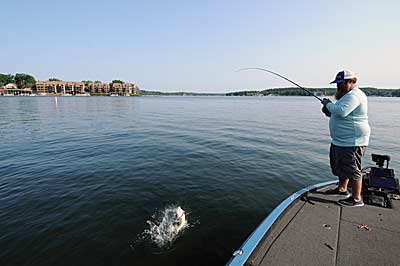
Most of Hibdon's hair jigs are 7 inches long, although he does tie some with synthetic craft fur measuring about 9 inches long to create a big profile bait. "We have some that look like a whole chicken that we are throwing into the lake," Hibdon says.
The 7-inch jigs match the size of the bass forage on the lakes Hibdon frequently fishes. “Most of our gizzard shad are 6 to 8 inches, so we try to get something close to that," he says.
The hair jig produces bass for Hibdon throughout the year in the right conditions. "A hair jig is not season dependent for me," he says. "If I see the right situation where the fish are schooled up on a point or some deep place, if I can’t get them to fire up throwing a jig or worm at them, the hair jig many times will get them fired up."
Hibdon suggests the optimal time to throw his hair jig is on a sunny day during the postspawn when the bass have moved to deep structure. “Any time it’s post spawn anywhere in the country--I don’t care whether you are fishing shell beds in Florida or even as far north as Canada--you are just trying to get a school activated (with the hair jig),” he says.
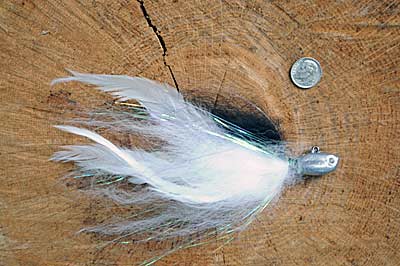
Water clarity also dictates whether Hibdon relies on the hair jig or a different lure. "I want the bass to be able to see the jig from a distance because it is just a reaction thing and a sight factor for them," he says. The lure maker believes bass attack the lure better when at least 1 to 2 feet of visibility in the water.
Points, ledges, and any other type of deep offshore structure are ideal spots to throw the hair jig. Hibdon notes he has caught bass on his hair jig as shallow as 5 or 6 feet deep at Lake of the Ozarks and as deep as 40 to 50 feet at Table Rock Lake.
The tournament competitor suggests you can catch both suspended bass and bottom huggers with the hair jig. Hibdon believes the lure is ideal for beginners or anglers who lack sophisticated electronics because the hair jig allows them to use various retrieves to find and catch bass. Hibdon prefers using a retrieve similar to working a flutter spoon, but he notices the lure produces strikes by steadily reeling it. "We have found no wrong way to do it,” he says. “You can just throw it out there and reel it in, which I have done a lot while guiding."
The reel-and-pause presentation Hibdon employs for his flutter spoons is the same basic retrieve he uses for the hair jig when he wants to fire up a school of bass. "I make a long cast to them and then let it hit bottom, crank it six or seven times pretty fast on a 6.8:1 or 7.0:1 gear ratio reel and let it fall straight back to them," Hibdon says. "Then I just repeat that over and over until I get it back to the boat.” He advises letting the jig fall quickly on a semi-taut line and watching for any movement in the line because bites frequently occur during the lure's descent.
Hibdon's gear for his hair jig tactics includes a 7-foot medium-heavy action casting rod on a medium- or high-speed baitcasting reel filled with 12- or 15-pound fluorocarbon line for his lighter jigs. He switches to a 7-foot, 3-inch medium-heavy action casting rod with the same reel spooled with 15- or 17-pound fluorocarbon for throwing 3/4- or 1-ounce jigs. He suggests you can also use medium-heavy spinning tackle for hair jigs because bass will usually get solidly hooked if you reel quickly during the hook set without applying a hard jerk of the rod.
You can get additional tips like these from the author’s book, “101 Bass Fishing Tips, Twenty-First Century Bassing Tactics and Techniques from All the Top Pros.” Order an autographed copy by visiting https://jnoutdoors1.jnoutdoors.com


